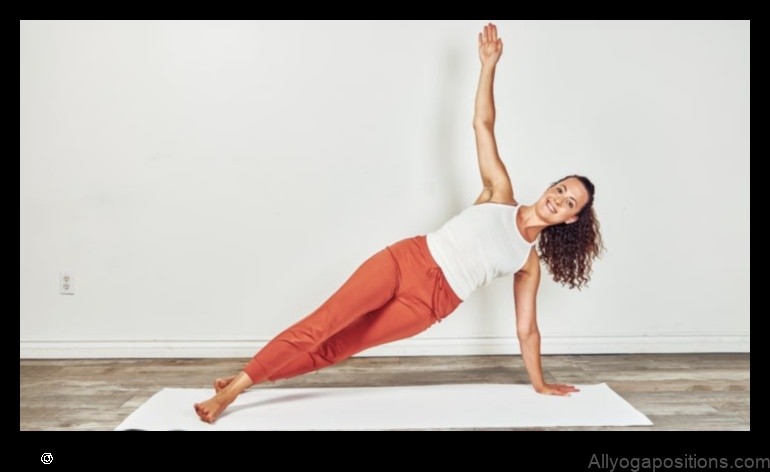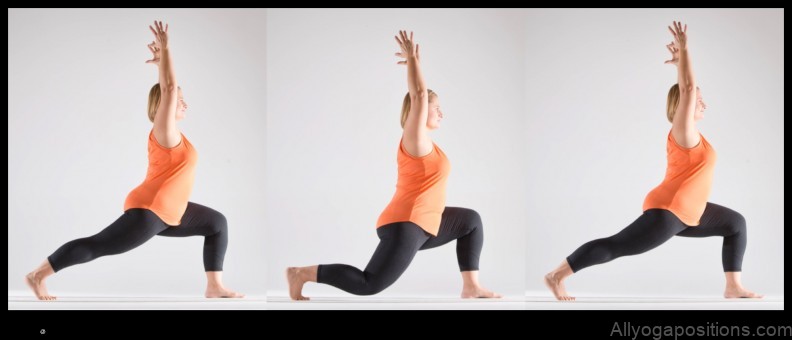
Calm Core: Yoga for Stability
This yoga practice is designed to help you relax and improve your balance. It is perfect for beginners or those who are looking for a gentle and accessible practice.
The poses in this practice are all focused on strengthening and stabilizing the core muscles. This will help you to improve your posture, reduce back pain, and improve your overall balance.
The practice also includes some deep breathing exercises and relaxation techniques to help you to calm your mind and body.
If you are new to yoga, please listen to your body and modify the poses as needed. You should never feel pain during this practice.
Beginner’s Calm Core Yoga Practice
- Stand with your feet shoulder-width apart and your arms at your sides. Inhale and raise your arms overhead, then exhale and bend forward from your hips, reaching your hands towards your toes. Hold for 5-10 breaths, then return to standing.
- Come to all fours, then extend your right leg back behind you and place your right foot on the floor. Inhale and extend your left arm forward, then exhale and lower your left shoulder to the floor. Hold for 5-10 breaths, then repeat on the other side.
- From all fours, step your feet together and sit back on your heels. Bring your hands to your shins and extend your spine. Inhale and reach your arms up overhead, then exhale and fold forward from your hips, reaching your hands towards your toes. Hold for 5-10 breaths, then return to sitting.
- Lie down on your back with your knees bent and your feet flat on the floor. Inhale and raise your arms overhead, then exhale and lower your arms to your sides. Relax your entire body and breathe deeply for 5-10 minutes.
Benefits of Core Stability Yoga
- Improved posture
- Reduced back pain
- Improved balance
- Increased flexibility
- Reduced stress
- Enhanced relaxation
How to Progress with Core Stability Yoga
- Start slowly and gradually increase the intensity of your practice as you get stronger.
- Listen to your body and modify the poses as needed. You should never feel pain during this practice.
- Be patient and consistent with your practice. It takes time to build core strength and stability.
Core Stability Yoga for Athletes
- Core stability is essential for all athletes, regardless of their sport.
- Core stability exercises can help to improve athletic performance by reducing the risk of injuries, improving balance and coordination, and increasing power and strength.
- Athletes should incorporate core stability exercises into their training program on a regular basis.
Core Stability Yoga for Pregnancy and Postpartum
- Core stability is important for pregnant women to maintain a healthy spine and pelvis.
- Core stability exercises can help to relieve back pain, prevent diastasis recti, and prepare for labor and delivery.
- Postpartum women can also benefit from core stability exercises to help them recover from childbirth and regain their strength and flexibility.
FAQ
- What is core stability?
- Why is core stability important?
- What are the benefits of core stability yoga?
- How do I do core stability yoga?
- How can I progress with core stability yoga?
- How can core stability yoga help me as an athlete?
- How can core stability yoga help me during pregnancy and postpartum?
| Topic | Feature |
|---|---|
| Calm Core Yoga | Gentle yoga practice that helps to relax and improve balance |
| Yoga for Stability | Strengthens and tones the core muscles |
| Yoga for Beginners | Accessible and gentle practice for those new to yoga |
| Yoga for Stress Relief | Helps to reduce stress and anxiety |
| Yoga for Mindfulness | Promotes relaxation and focus |

II. What is Core Stability?
Core stability is the ability of your abdominal and back muscles to work together to support your spine and pelvis. It is essential for good posture, balance, and movement. When your core is strong and stable, you are less likely to experience pain or injury.
Core stability is also important for athletic performance. Strong core muscles help you to generate power and maintain proper form during activities such as running, jumping, and lifting.
II. What is Core Stability?
Core stability is the ability of your abdominal and back muscles to work together to support your spine and pelvis. It is essential for good posture, balance, and movement. When your core is strong and stable, you are less likely to experience pain or injury. You will also be able to perform everyday activities more easily, such as lifting, carrying, and twisting.
Benefits of Core Stability
Core stability is important for a number of reasons. A strong core can help to:
- Improve your posture
- Reduce back pain
- Prevent injuries
- Improve athletic performance
- Ease labor and delivery
- Prevent incontinence
If you are looking to improve your core stability, there are a number of exercises that you can do. Some of the most common core stability exercises include:
- Plank
- Side plank
- Bird dog
- Cobra pose
- Bridge pose
It is important to start slowly and gradually increase the difficulty of the exercises as your strength improves. If you have any underlying health conditions, be sure to talk to your doctor before starting any new exercise program.

V. Exercises for Core Stability
There are many different exercises that can help to improve core stability. Some of the most common include:
- Plank
- Side plank
- Bird dog
- Dead bug
- Cobra pose
- Supine bridge
- Cat-cow
- Diaphragmatic breathing
These exercises can be performed individually or as part of a larger core stability workout. It is important to start slowly and gradually increase the intensity and duration of your workouts as you get stronger.
When performing core stability exercises, it is important to focus on engaging your core muscles and maintaining proper form. Avoid arching your back or allowing your hips to sag.
Core stability exercises can be beneficial for people of all ages and fitness levels. They can help to improve balance, reduce pain, and prevent injuries.
VI. Mistakes to Avoid
When performing core stability exercises, it is important to avoid making common mistakes. These mistakes can not only reduce the effectiveness of the exercises, but they can also lead to injury.
Some of the most common mistakes to avoid include:
- Not engaging your core muscles. When performing core stability exercises, it is important to focus on engaging your core muscles. This means tightening your abdominal muscles and drawing your belly button in towards your spine.
- Overdoing it. It is important to start slowly with core stability exercises and gradually increase the intensity as you get stronger. If you overdo it, you can put yourself at risk of injury.
- Holding your breath. When performing core stability exercises, it is important to breathe normally. Holding your breath can increase your risk of injury and make the exercises less effective.
- Bouncing. Bouncing during core stability exercises can also increase your risk of injury. It is important to move slowly and controlled.
By avoiding these common mistakes, you can improve the effectiveness of your core stability exercises and reduce your risk of injury.
VII. How to Progress with Core Stability Exercises
As you get stronger, you can progress with your core stability exercises by gradually increasing the following:
- The number of repetitions you do per exercise
- The weight you use
- The difficulty of the exercise
It is important to listen to your body and stop if you feel pain. You should also progress slowly and gradually, so that you do not overstrain yourself.
Here are some tips for progressing with core stability exercises:
- Start with a basic core stability exercise, such as a plank or a bridge.
- Do the exercise for a set number of repetitions, such as 10 or 12.
- Increase the number of repetitions each week, until you are able to do the exercise for 30 repetitions.
- Once you are able to do the exercise for 30 repetitions, you can start to increase the weight you use.
- You can also progress by making the exercise more difficult, such as by adding a twist or a balance challenge.
By following these tips, you can safely and effectively progress with your core stability exercises.
Core Stability for Athletes
Core stability is essential for athletes of all levels, as it helps to improve balance, power, and performance. A strong core can help to protect the spine from injury, and it can also help to prevent lower back pain.
There are a number of exercises that athletes can do to improve their core stability, including planks, bridges, and side planks. These exercises can be performed as part of a warm-up or cool-down, or they can be done on their own.
In addition to exercises, there are a number of other things that athletes can do to improve their core stability, including:
- Maintaining a healthy weight
- Eating a healthy diet
- Getting enough sleep
- Stretching regularly
- Strengthening the core muscles
By following these tips, athletes can improve their core stability and perform at their best.
During pregnancy, your body goes through many changes that can affect your core stability. The increased weight of your growing baby, the relaxation of your ligaments, and the changes in your center of gravity can all make it more difficult to maintain good core strength.
After giving birth, your core muscles may be weakened and stretched. This can make it difficult to perform everyday activities, such as getting up from a chair or carrying your baby. Core stability exercises can help you to recover from childbirth and regain your strength and flexibility.
Here are some tips for doing core stability exercises during pregnancy and postpartum:
- Start slowly and gradually increase the intensity and duration of your workouts as you progress.
- Choose exercises that are appropriate for your fitness level and stage of pregnancy or postpartum recovery.
- Listen to your body and stop if you feel pain.
- Stay hydrated by drinking plenty of water before, during, and after your workouts.
If you have any concerns about doing core stability exercises, talk to your doctor or midwife.
Here are some examples of core stability exercises that you can do during pregnancy and postpartum:
- Pelvic tilts
- Bridging
- Plank
- Side plank
- Bird dog
By doing core stability exercises, you can help to improve your balance, reduce your risk of injury, and recover from childbirth more quickly.
FAQ
Q: What is core stability?
A: Core stability is the ability to maintain a neutral spine and pelvis while performing activities of daily living and athletic movements. It is essential for good posture, balance, and movement.
Q: Why is core stability important?
A: Core stability is important for a variety of reasons, including:
* Preventing injuries
* Improving athletic performance
* Reducing pain
* Improving posture
* Boosting your metabolism
Q: What are the benefits of core stability exercises?
A: Core stability exercises can help you to:
* Improve your posture
* Reduce your risk of injury
* Improve your athletic performance
* Reduce pain
* Boost your metabolism
Table of Contents
Maybe You Like Them Too
- Yoga for Shoulder Mobility 5 Rotator Cuff Stretches to Improve Range of Motion
- Meditation 101 A Beginner’s Guide to Inner PeaceUncover the secrets of a peaceful mind and live a more fulfilling life.
- The Art of Yoga Journaling A Guide to Reflecting on Your Practice
- Standing Fire Log (Agnistambhasana) A Guide to This Restorative Yoga Pose
- Yoga and Nutrition A Holistic Approach to Wellness
